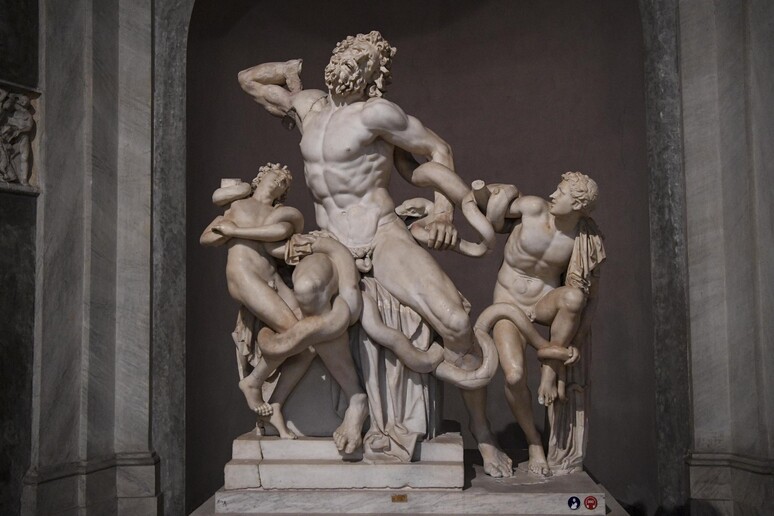Activists from Italy's Ultima
Generazione (Last Generation) climate crisis action group on
Thursday glued themselves to one of the Vatican Museum's most
famous statues holding up a placard saying "no gas and no coal".
The activists, who have used tactics similar to those of
Extinction Rebellion and other groups in Britain and elsewhere,
glued themselves to the base of the iconic Laocoon group of
statuary.
The group, one of the most famous works of Greek and Roman
antiquity, shows the Trojan priest and his two sons being killed
by sea snakes sent by Poseidon after vainly trying to expose the
Greek's Trojan Horse ruse.
Ultima Generazione said in a statement "Like Laocoon, scientists
and activists are witnesses trying to warn those around them of
the consequences that today's actions will have on the future.
"Like Laoccon, scientists and activists are not being listened
to or, even worse, they are being silenced by the political
world, which is more interested in defending the privileges of a
minority than proving for the good of the community".
Laura, one of the two activists who glued themselves to the
statue, said "the statue recalls the sad fate which the Greek
(sic) priest suffered in the attempt to save himself, his
children and all the citizens.
"In our movement there are parents, there are children, united
by the will to push the world of politics to make the right
choices to curb climate change before it is too late".
The statue of Laocoön and His Sons, also called the Laocoön
Group, has been one of the most famous ancient sculptures ever
since it was excavated in Rome in 1506 and placed on public
display in the Vatican Museums, where it remains. It is very
likely the same statue that was praised in the highest terms by
the main Roman writer on art, Pliny the Elder.The figures are
near life-size and the group is a little over 2 m (6 ft 7 in) in
height, showing the Trojan priest Laocoön and his sons
Antiphantes and Thymbraeus being attacked by sea serpents.
The group has been called "the prototypical icon of human agony"
in Western art, and unlike the agony often depicted in Christian
art showing the Passion of Jesus and martyrs, this suffering has
no redemptive power or reward.
Pliny attributes the work, then in the palace of Emperor Titus,
to three Greek sculptors from the island of Rhodes: Agesander,
Athenodoros and Polydorus, but does not give a date or patron.
In style it is considered "one of the finest examples of the
Hellenistic baroque" and certainly in the Greek tradition, but
it is not known whether it is an original work or a copy of an
earlier sculpture, probably in bronze, or made for a Greek or
Roman commission.
Most scholars think it a copy of a much earlier Greek original.
ALL RIGHTS RESERVED © Copyright ANSA











